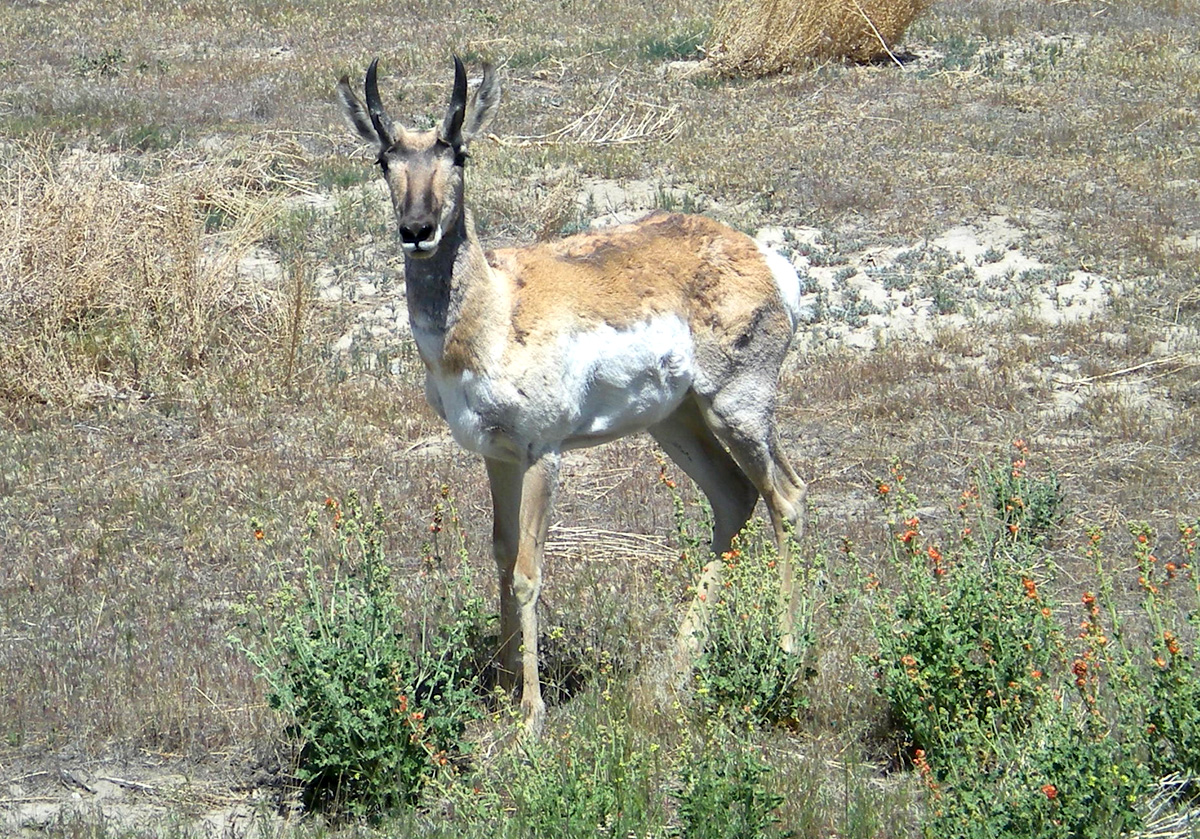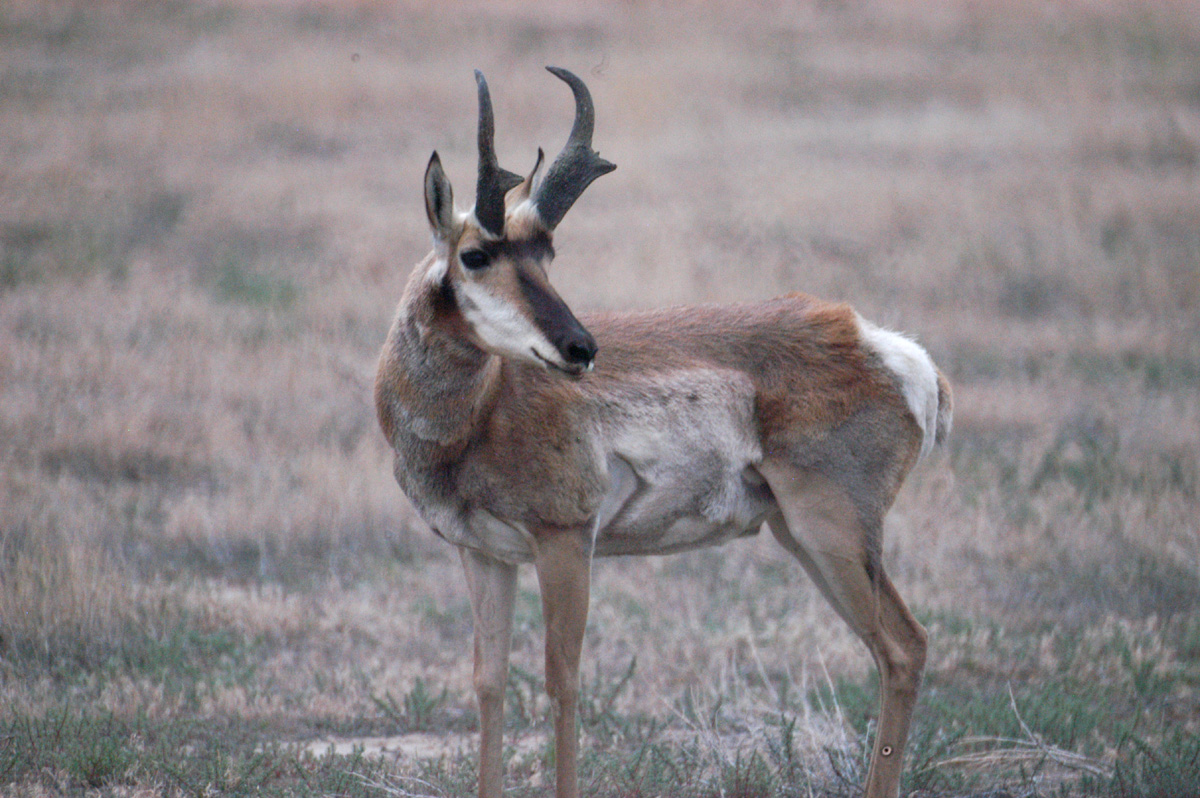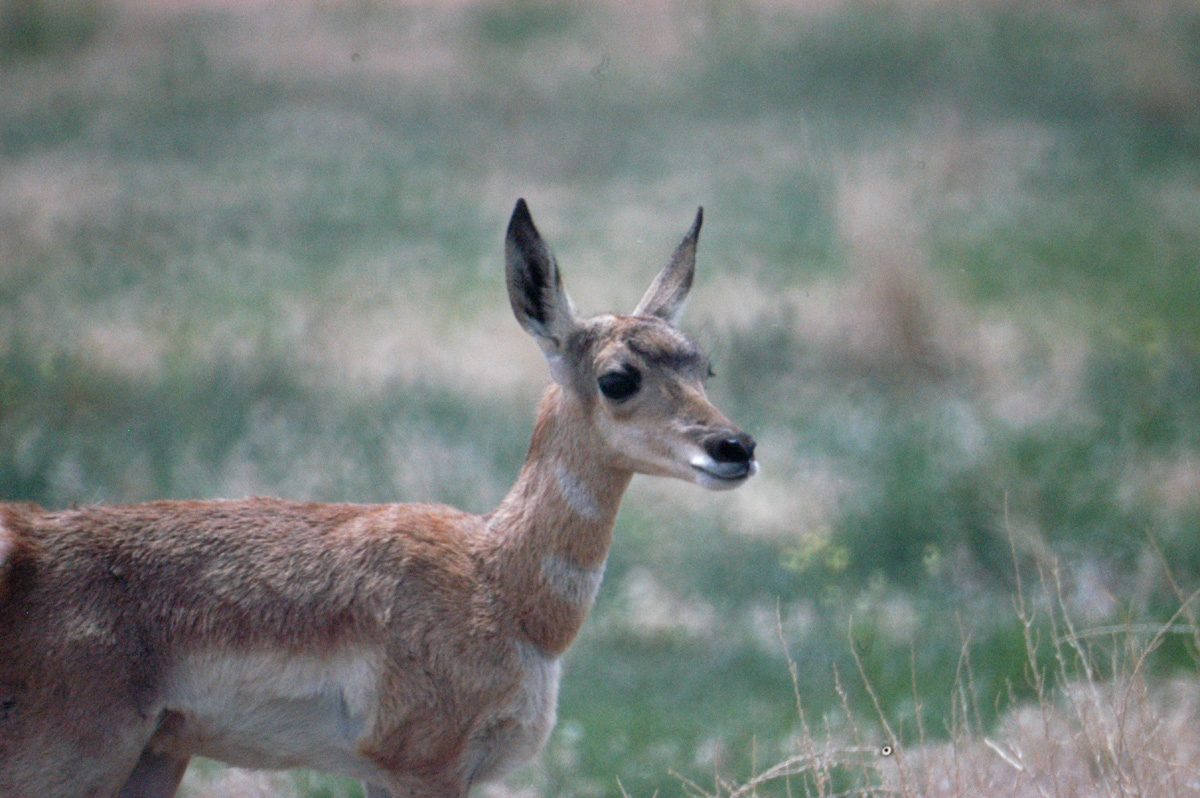


Pronghorn Antelope
The Pronghorn Antelope is more common in Wyoming and Colorado than in Utah but the quantities here are sufficient to give visitors a good opportunity to observe and photograph them. I have seen antelope within a few hundred yards of my home on several occasions. Fortunately, their numbers in the U.S. increased greatly during the latter half of the 20th century, which was not the case during the previous century. By 1908, hunting pressure had reduced the pronghorn population to about 20,000. Protection of habitat and hunting restrictions have allowed their numbers to recover to about 500,000.
Adult males weigh 88-132 lb. The females are slightly less heavy, 88-110 lb. The main color of adults is brown or tan, with a white rump and belly and two white stripes on the throat. A short dark mane grows along the neck, and males also sport a black mask and black patches on the sides of the neck. The tail is short. The feet have just two hooves, with no dewclaws.
Males have a prominent pair of horns on the top of the head, which are made up of an outer sheath of hairlike substance that grows around a bony core; the outer sheath is shed annually. Females antelope will occasionally grow horns. Males have a horn sheath about 5 to 17 inches long with a prong. Females have smaller horns, sometimes barely visible; they are straight and very rarely pronged. Males are further differentiated from females in that males will have a small patch of black hair at the corner of the jawbone. Pronghorns have a distinct, musky odor. Males mark territory with a scent gland located on the sides of the head. They also have very large eyes, with a 320 degree field of vision. Unlike deer, pronghorns possess a gallbladder.
Pronghorns can run exceptionally fast, being built for maximum predator evasion through running, and is generally accepted to be the fastest land mammal on the North American continent. The top speed is very hard to measure accurately and varies between individuals; it is variously cited as up to 40 to 45 mph. It is often claimed to be the second-fastest land animal, second only to the cheetah. It can however sustain high speeds longer than cheetahs. The pronghorn probably evolved its running ability to escape from the recently extinct American cheetah, since its speed greatly exceeds that of other North American predators. It has a very large heart and lungs, and their hair is hollow. Although built for speed, it is a very poor jumper. Their ranges are often affected by sheep ranchers' fences. However, they can be seen going under fences, sometimes at high speed. For this reason the Arizona Antelope Foundation and others are in the process of removing the bottom barbed wire from the fences, and/or installing a barbless bottom wire.
Pronghorns live primarily in grasslands, brushland, and deserts. They eat a variety of plant foods, but concentrate heavily on forbs (non-grass flowering plants) and cacti when available. Pronghorns are widely hunted in western states for population control and for food.
 |
Image taken early May, 2009, about 25 miles east of Green River, Utah. Nikon S210 camera, set on telephoto and image cropped somewhat. |
 |
Taken June 9, 2009, near Thompson Springs, Utah. Nikon D-100 and 500mm mirror lens. ISO 1600. |
 |
Juvenile Pronghorn - Taken June 9, 2009, at the edge of town - Thompson Springs, Utah. Nikon D-100 and 500mm mirror lens. |
Taken June, 2008, in Emery County. Nikon S210 camera set on telephoto- image cropped somewhat. |